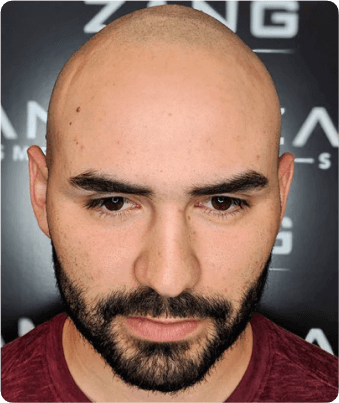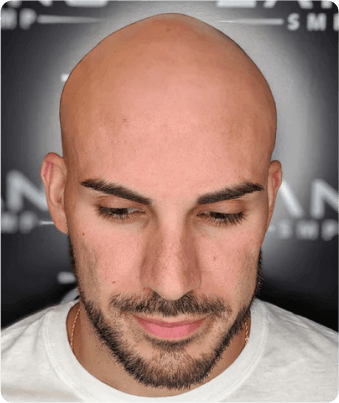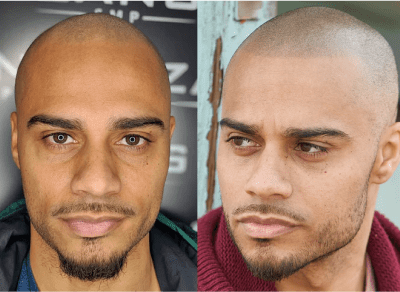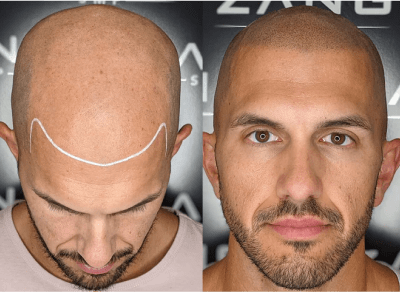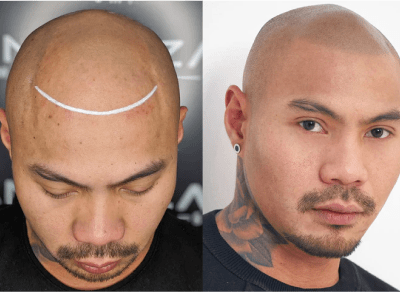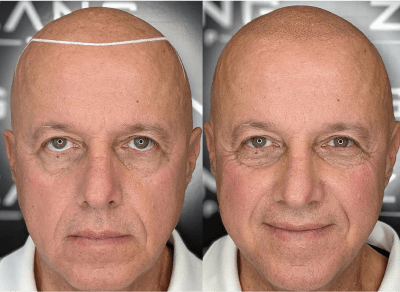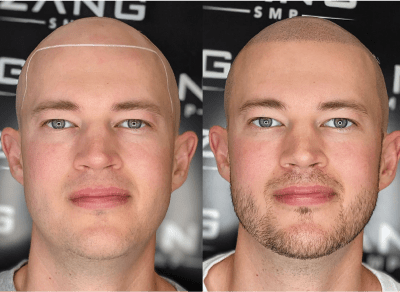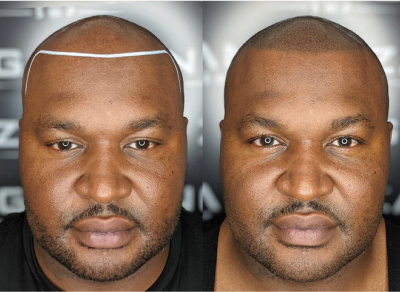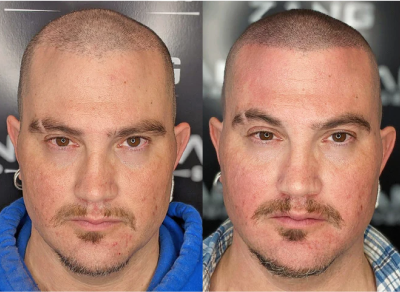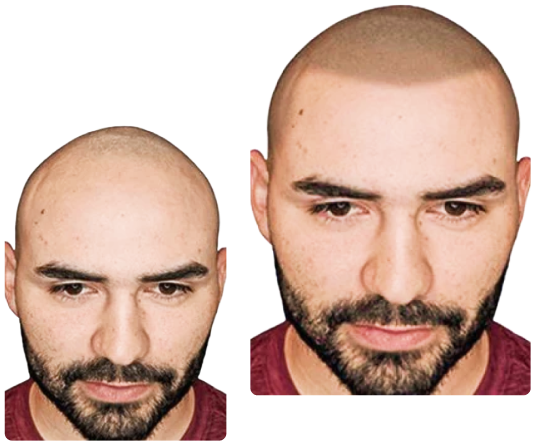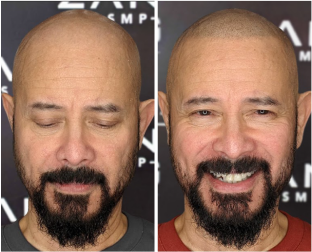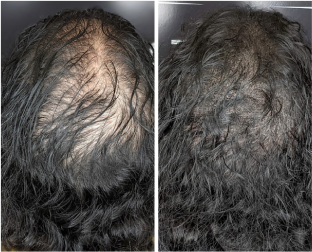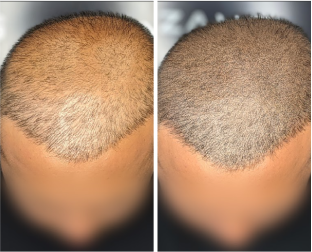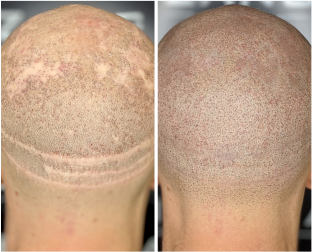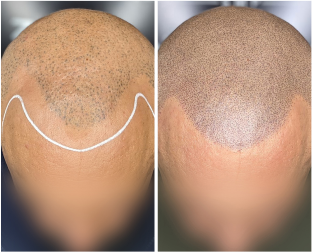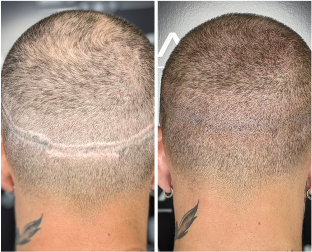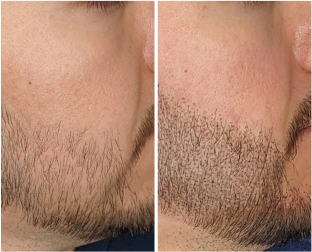How is Male Pattern Baldness Diagnosed and How Does it Influence Hair Loss?
Recognized by hair loss focused on the hairline and crown, male pattern baldness is a condition heavily influenced by genetics and hormones, much like other hair disorders.
Stages of Male Pattern Baldness
Hair loss is often measured using the Hamilton-Norwood scale, where stage 1 indicates minimal loss, and stage 7 reflects total baldness at the top of the head.
Patients in Norwood stages 1 through 3 commonly experience mild to moderate hairline recession.
Stages 4 and 5 show significant progression, with pronounced hair loss at the front and marked thinning at the crown. By stages 6 and 7, the scalp’s upper region is almost entirely devoid of hair.
Rare cases of male pattern baldness include diffuse thinning that doesn’t affect the hairline or isolated hair loss at the crown, leaving the hairline intact.
Treatment For Male Pattern Hair Loss: Scalp Micropigmentation
Scalp Micropigmentation (SMP) is an advanced non-surgical technique designed to combat male-pattern baldness. By replicating the appearance of natural hair follicles, this innovative treatment restores the look of a full head of hair, regardless of the extent of hair loss.
Unlike hair transplants that rely on donor hair, SMP provides immediate results without requiring any recovery period. It creates the illusion of dense hair with no dependence on the availability of grafts, making it an efficient and versatile option for men.
At Zang SMP in Pasadena, we use premium organic, plant-based pigments that seamlessly mimic the natural color and texture of hair follicles. These pigments are expertly applied to give you a buzz-cut style that looks clean, fresh, and youthful.
With SMP, you can bypass the risks and discomfort associated with surgical hair restoration methods. This solution is ideal for those seeking a non-invasive way to address baldness and regain their confidence. Our team is dedicated to helping you achieve a look that complements your style and individuality.
Most SMP treatments require two to three sessions to complete. The initial sessions are spaced a week apart, while an optional third session is scheduled 1 to 3 months later to refine and perfect the results for a long-lasting impact.

